- News
- Reviews
- Bikes
- Components
- Bar tape & grips
- Bottom brackets
- Brake & gear cables
- Brake & STI levers
- Brake pads & spares
- Brakes
- Cassettes & freewheels
- Chains
- Chainsets & chainrings
- Derailleurs - front
- Derailleurs - rear
- Forks
- Gear levers & shifters
- Groupsets
- Handlebars & extensions
- Headsets
- Hubs
- Inner tubes
- Pedals
- Quick releases & skewers
- Saddles
- Seatposts
- Stems
- Wheels
- Tyres
- Tubeless valves
- Accessories
- Accessories - misc
- Computer mounts
- Bags
- Bar ends
- Bike bags & cases
- Bottle cages
- Bottles
- Cameras
- Car racks
- Child seats
- Computers
- Glasses
- GPS units
- Helmets
- Lights - front
- Lights - rear
- Lights - sets
- Locks
- Mirrors
- Mudguards
- Racks
- Pumps & CO2 inflators
- Puncture kits
- Reflectives
- Smart watches
- Stands and racks
- Trailers
- Clothing
- Health, fitness and nutrition
- Tools and workshop
- Miscellaneous
- Buyers Guides
- Features
- Forum
- Recommends
- Podcast
feature
 trends2
trends22015 Cycling Tech Trends and Rumours: What's coming now… and what's coming next
What a year it has been for cycling, we've seen a lot of new bikes and kit and heard some juicy rumours too, so it's time to stand back and look at the emerging trends and rate those rumours.
Disc brakes are the biggest trend on road bikes. Of course, disc brakes have been around for ages but their widespread adoption is new. They’re everywhere and Shimano are the big winners, but first let's have a rumour.
Rumour: Rotor and Magura are working on hydraulic road groupset
We're pretty certain this rumour has legs. Magura have fantastic expertise producing hydraulic rim and disc brakes for the mountain bike and hybrid/e-bike market, so it would be straightforward to produce a road-specific disc brake. They'd probably bring something interesting and different to the market too.
The problem for Magura is that they're a brake specialist, so partnering with Rotor, who produce chainsets and could develop the necessary shifter and derailleur components, shouldn't be too difficult for them. This could be an interesting partnership if anything does materialise.
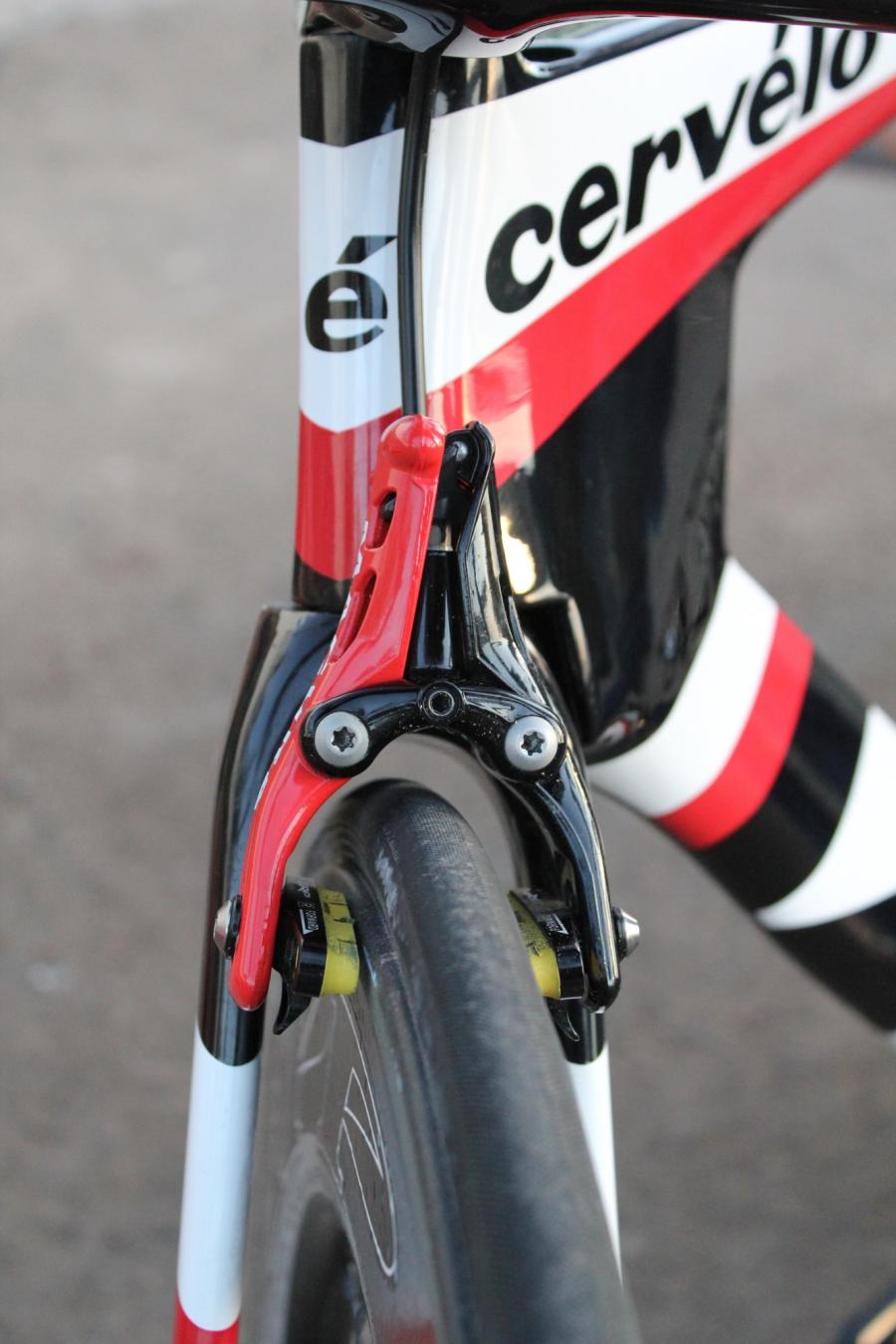
We already know Cervelo designed their latest frames with future-proofed cable routing expressly with hydraulic hoses in mind, and Cervelo use Magura's hydro rim brake on their time trial bikes already.
road.cc plausibility-ometer: 7
Don't mention discs…

Oh, all right then, do. Lots of top end bikes are sporting Shimano’s hydraulic brakes paired with both Di2 and mechanical levers, probably more of the latter. While most manufacturers have gone with 160 rotors, some are taking Shimano at their word and going with 140s front and back - Cannondale use 140s on various carbon Synapses and Bianchi do the same on the Infinito CV Disc which has finally arrived more than 18 months after its launch - possibly some sort of record. Now that its here, it certainly does look cool.

From what we saw at Eurobike, SRAM appear to be paying the price for their hydro brake recall earlier this year. On my initial canter around the halls I only spotted two bikes with SRAM hydraulic brakes - both on the Cannondale stand.
Word is, though, that the combination of high demand and long lead times from Shimano is forcing some manufacturers who’d planned to go with Shimano back towards SRAM - there are certainly plenty of SRAM hydro equipped bikes heading towards bike shops right now. And let's not forget that barring that unfortunate lapse in quality control, the original versions of SRAM's hydraulic brake were very good, and they reckon they've made the new version even better (we have some in on test so we'll let you know on that).

Not all disc braked road bikes have hydraulic discs though. There are plenty here with cable discs and on those Avid BB7s rule the day - good, well tried brakes in plentiful supply. Bianchi have gone down the cable route with both there new cyclocross bikes the Zurigo and the Zolder and on the new Impulso Disc too.
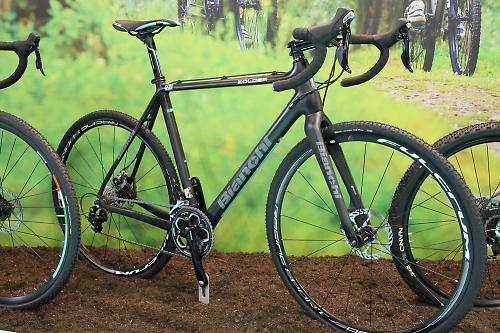
Right that’s enough disc braked road bikes. So what else is big?
Big and buzzy - e-bikes and fat bikes

They may not sell in massive numbers in the UK yet, but in other parts of the world e-bikes and fat bikes are all the rage. At Eurobike, such was the proliferation of e-bikes of every type that there might well have been more fat e-bikes than plain old fat bikes.
e-bikes aren’t the only bikes to blow up like a barrage balloon - we spotted a fat recumbent at the Eurobike demo day (very good at rolling over kerbs) and Felt had taken the opportunity to dig some of the chunkier cruiser bikes out of that warehouse on the outskirts of Dusseldorf where they’ve been gathering dust since 2009… well, that’s our theory. That’s not all, Santana have an e-tandem (which makes sense). Philippe Starck is even attempting to introduce a designer cool to the scene with his own range of e-bikes.
One thing we haven’t spotted so far is a fat road bike - although Austrian outfit Haibike have come close with a chunked up flat bar bike with deep section wheels, discs and power assist. The fat bike concept - bikes designed for rolling over rough terrain in maximum comfort - is something that could be applied to road bikes - given the state of the roads in Britain and many other countries, although the Surly Steamroller could lay claim to having been such a thing for the last decade.
Rumour: Campagnolo and Formula working on a disc brake
If the professional peloton are going to switch to disc brakes in the near future, then Campagnolo are going to need a disc brake, and you can bet they're busy working on one as you read these words. They've even confirmed to road.cc that they are developing a disc brake for 2016.
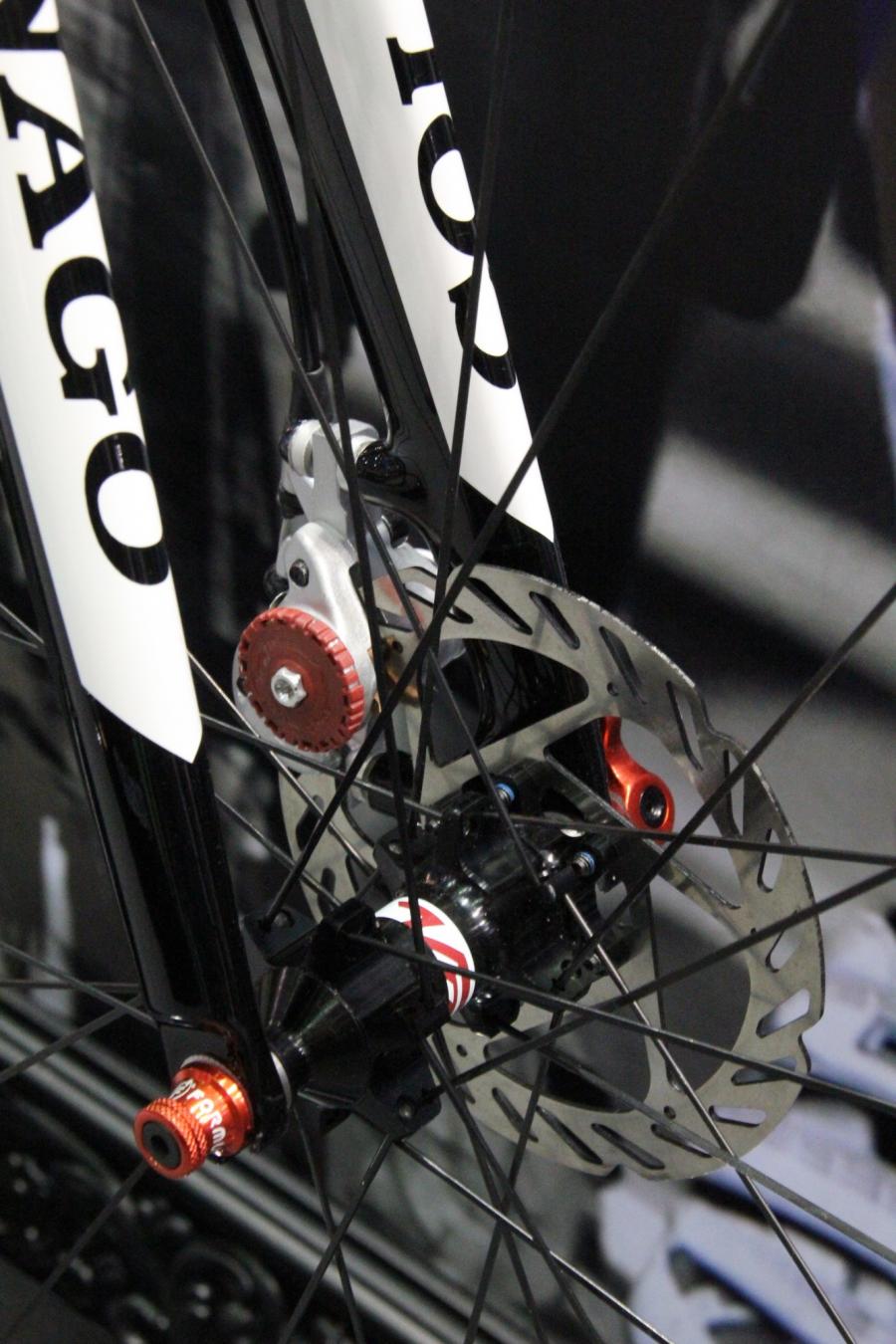
When Colnago released their C59 Disc three years ago, before Shimano and SRAM had unveiled their hydro discs, the Italian company used Formula disc brakes with their own brake levers, using adapted Campagnolo EPS shifter internals in their own hood. They've proven it's possible to package Campagnolo's EPS shifters with the necessary hydraulic reservoir.
road.cc plausibility-ometer: 8
52-36 is the new 50-34… or maybe 53-39
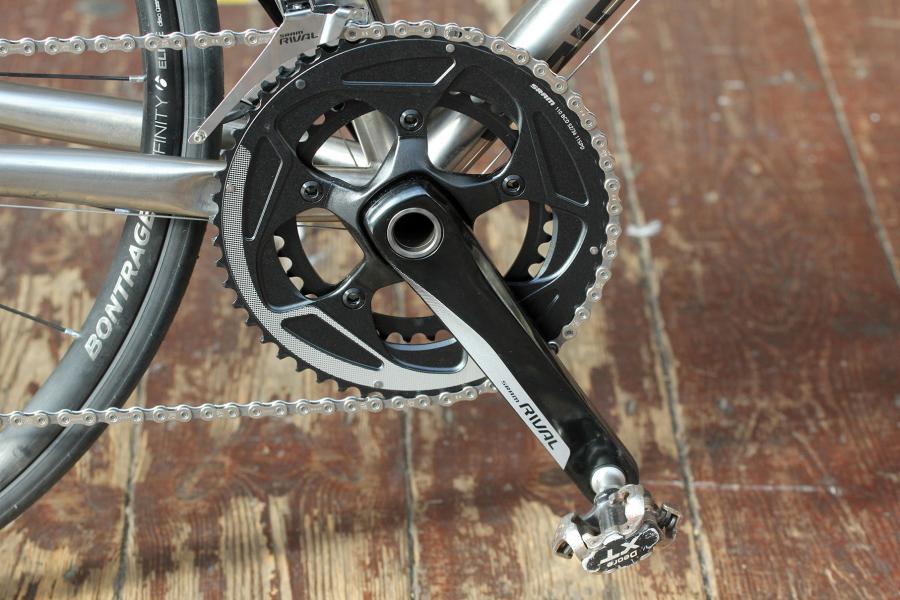
Well it is if you match it up to an 11-spd cassete. 52 - 36 chainsets have been around for a few years now - with pros like David Millar being a fan, but the advent of 11-speed groupsets has brought the configuration in to it's own. In fact there's a good argument for saying that it makes that 11th cog more than just a bigger number than the last one for component manufacturers to shoult about in their markeing blurb.
You're going to see a lot of top end bikes and mid-range bikes from now on sporting a 52-36 set up it's the default gear set up on some manufacturers 2015 ranges.
What's good about it? Well combined with an 11-spd cassette it should give you all the gears you want or need - a low enough bottom end and a much higher top gear than you would get running a compact. Team Sky for instance run a Dura Ace d12 52-36 set up and one of the team mechanics told us that they'd run with with an 11-28 for every race because it gave the riders all the gearing options they needed.
Shimano also offer a 12-28 Dura Ace cassette, and for big strong types an 11-23 and an 11-25. Look down the lofty heights of Dura Ace though and things get even more intersting - with both Ultegra and the new 11-spd 105 offering 11-32 rear cassetes. Match those up with a long cage rear mech (which Dave did on the Kinesis Tripster he reviewed recently) and you've got a bike that should be capable of going up anything while still having a big enough gear to give you a proper turn of speed on the flats. If SRAM is more your thing than Shimano, they offer similar set ups too, we're currently testing a Rival 22 52-36 wifli set up (that's it pictured above).
Rubber…
Wider tyres on road bikes
Did I say there were no fat road bikes? Not strictly true. One aspect of fatness that is coming to the road - relatively, at least - is wider tyres. The majority of performance machines now come with 25mm tyres as standard and thats a trend that’s set to continue. The pros are already starting to run with 28 and even 32mm road tyres - lower rolling resistance, bigger contact patch (so more grip), and far greater comfort.

So look out for fatter tyres on road bikes coming soon. One major tyre company told us they were already getting requests for a performance 32mm road tyre from some bike brands looking to fit them as original equipment on their 2016 bikes. The advent of disc brakes on road bikes also makes fitting fatter tyres less problematic.
Road tubeless - not here yet…
Tubeless tyres are a bit like disc brakes in that they’ve been around on mountain bikes for years, they work, everybody accepts they just work to the point where they are now the default system. You don’t find many people mourning the demise of the inner tube, just as mountain bikers don’t get all misty eyed about v-brakes, if they can remember them at all. Like discs on road bikes, you might think ‘what’s the point?’ until you ride some and then you really get it: lower rolling resistance in a virtually puncture-proof format.
So why isn’t tubeless technology appearing on more road tyres? Lack of tyres, is the simple answer. We spoke to a senior figure at one bike company who told us they were ready to go and there were enough road tubeless wheels now available to make them viable as original equipment but the only thing holding them back was a lack of affordably priced tyres.
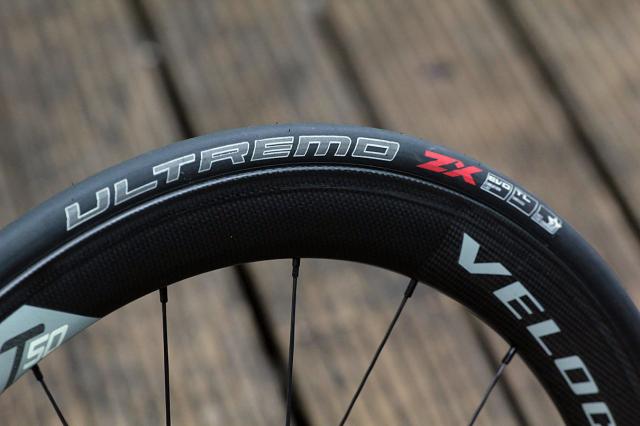
At the moment tyre choice is limited to Schwalbe or Hutchinson. Continental still say they have no plans to make a tubeless tyre, they question the benefits too - which to us has echoes of SRAM’s insistence that electronic shifting would never catch on and mechanical shifting was the way to go. Five years later they are bing forced to play catch up.
One other reason we heard mentioned for the slow progress of road tubeless to market was the need to make sure you had a tyre that wouldn’t roll off the rim. That’s a fear that rim manufacturers seem to have conquered resulting in the increasing number of tubeless or tubeless ready road/cyclocross rims available.
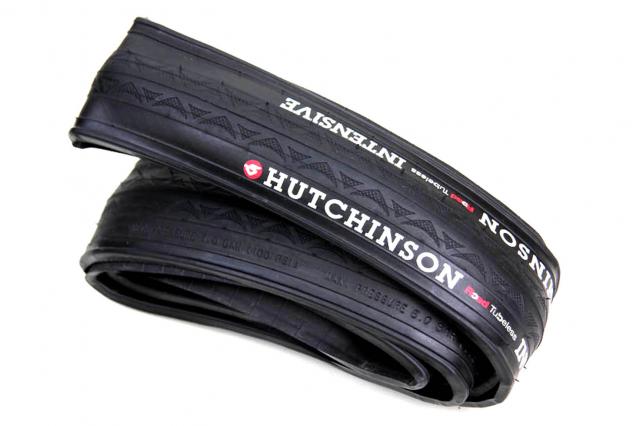
We’d also point out that Hutchinson’s tubeless system has been around for more than five years now, and Schwalbe’s getting on for two. A tubeless road tyre rolling off the rim would be messy in every sense of the word, so if it had happened in any meaningful numbers the bike world might have noticed by now.
Our guess is that Schwalbe will produce a tubeless version of their mid-range Stelvio and that if it’s half decent
(which we expect it would be) they’ll clean up.
The trend that hasn’t happened yet - gravel bikes
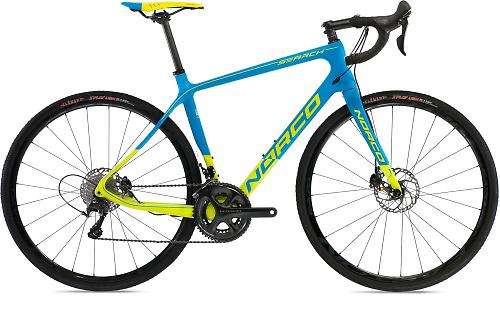
Gravel bikes may be big in the USA but at Eurobike there were a few, but then again, too few to mention… Oh, all right then, Norco were showing their Search. Plus, there were the GT Grade ‘all road’ bikes. GT had four Grades in both aluminium and titanium builds, dividing opinions as to whether they’d been touched by the cool or ugly sticks.
Rumour: Shimano Dura-Ace with integrated power meter
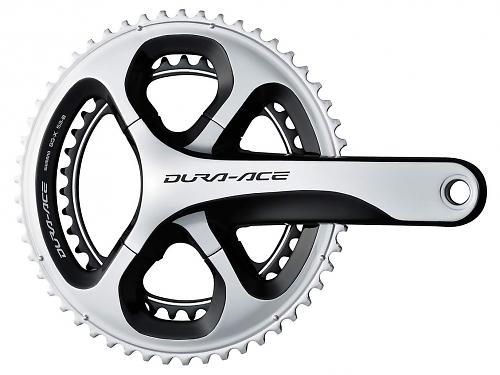
Power meters are hot stuff at the moment with more flooding onto the market all the time, and the entry price gradually falling. SRAM is the only one of the three groupset manufacturers to offer power, having purchased the Quarq company a few years ago. Now Shimano could partner with a similiar company, but the rumour we're hearing is that they're developing their own power meter, and it'll be integrated into the chainset.
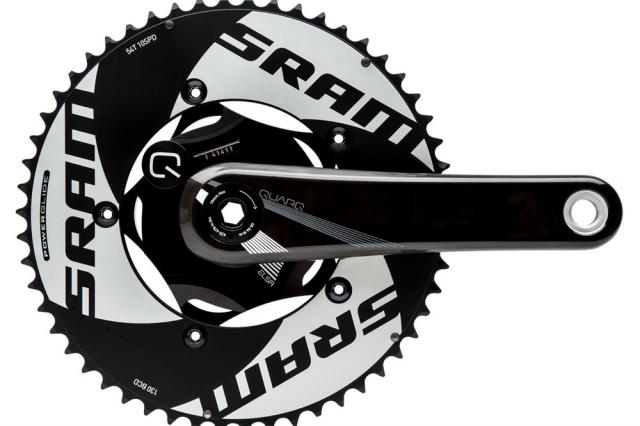
Given Shimano's track record of innovation and rapid trickle down to the lower groupsets, this could be a huge game changer for the power meter market, and it would probably wipe out some of the current options. We've no idea if there is any truth in this rumour, but we reckon it's plausible.
road.cc plausibility-ometer: 5
Rise of the super commuter
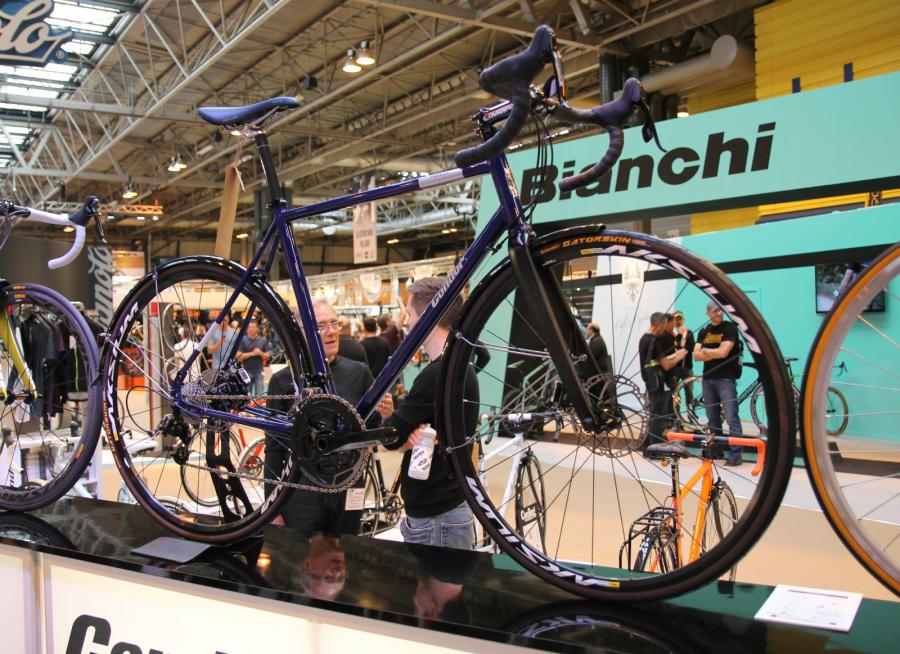
By 'super commuter' we mean well-specced bikes for riding to work fast all year round. At last, there is a recognition that for a lot of cyclists commuting is a form of training either for general fitness or for racing, and that plenty of riders that don’t race still want a bike that blends performance and utility.
These bikes come with disc brakes for more control and better performance on crappy roads in crappy weather, mudguards as standard for better weather protection, 25mm tyres for extra comfort and performance too, lighter frames.
The super commuter is something of a British trend with UK brands are leading the way, although they’re not the only ones to be involved. It’s the logical next step in the development of the sort of all rounder bikes that the likes of Genesis, Charge, and Pinnacle have been making for the last few years. The new super commuters are basically those bikes with lighter frames, better discs, and carbon forks.

But that’s not all, with the Cornwall, Whyte have gone the whole hog and produced a complete carbon performance bike with the commuter and year round rider in mind.

Always quick to spot a trend, Cannondale have also got in on the act with the Synapse Alu, which was turning heads at Eurobike with its close fitting colour co-ordinated mudguards and hydraulic brakes. The word is that Evans snapped that one up as a UK exclusive. A smart move, we’d say.
Rumour: SRAM wireless groupset coming soon?
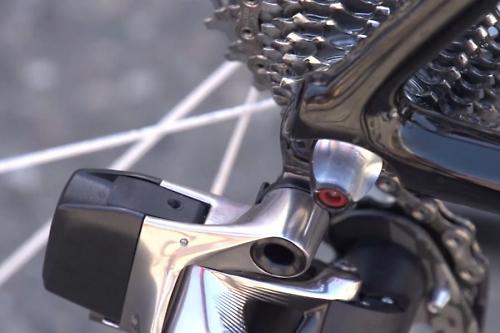
This isn't so much a rumour, but a fact. How do we know? We've even seen photos and videos of the new groupset being tested in the US.
The question is, when is it coming to market and how much will it cost? There's clearly a lot of pressure on SRAM to nail this release following the disc brake recall saga. Wireless and Bluetooth technology is well proven in other applications (I'm listening to the radio through a Bluetooth speaker and surfing the web on WiFi right now) so in theory it should be fairly simple.
This groupset has big implications for the future of the bicycle, at least for the next 20 years. It could free up bicycle designers from having to concern themselves with cable routing, something some manufacturers still struggle with. And there's all sorts of connectivity potential with smartphones, wearable tech and handlebar-mounted computers. The home internet untangled itself from the humble ethernet cable and we all now use wireless networks. Could the same happen to the bicycle?
road.cc plausibility-ometer: 9
Different on the inside
More than one manufacturer had lighter/stiffer/more complaint/all of the above/delete as applicable new carbon bikes that looked exactly the same as the bikes they replaced and, we’re guessing, probably came out of the same moulds. The improvements, they claimed, were achieved due to big advances in carbon layup technology that the bike industry has gotten its hands on in the last 12 months.
Better still, one manufacturer told us the new production methods enabled them to use less high modulus carbon in the layup so the frames are cheaper too - a saving being passed on to consumers.
Which brings us on to…
Cheaper road bikes for Brits
The combination of new production technologies and favourable exchange rates means that this season’s bikes should not only be better, and better specced, they should also be cheaper.
Bike companies will be announcing their prices in the coming weeks so look out for a stream of stories announcing price cuts. For instance the Shimano Ultegra equipped BTwin pictured above is likely to sell for somewhere well under £2000 - word is it will be closer to £1500. The only possible downside we can see is for end-of-season bargain hunters who will have the unusual dilemma of deciding whether to grab a bargain now or hang on and grab a newer bargain in a few weeks' time. That might also be a downside for shops who’ve got 2014 bikes to shift. Of course, that assumes they've got any left to shift.
Rumour: CycleOps to release pedal-based power meter

CycleOps, who are well known for their hub-based PowerTap that has been around for years, were showing a bunch of early development prototypes at Eurobike. These included a pedal-based system, a shoe sole system, and a crank power meter.
CycleOps told us these were simply the results of the development team experimenting with different systems, purely to see what might work and what won't. We tried to prise some more info out of them but they would't budge. We later heard something else that leads us to think they might actually be close to launching a pedal-based power meter.
road.cc plausibility-ometer: 3
Confirmed rumour: FSA 11-speed electronic groupset
road.cc plausibility-ometer: 10
road.cc's founder and first editor, nowadays to be found riding a spreadsheet. Tony's journey in cycling media started in 1997 as production editor and then deputy editor of Total Bike, acting editor of Total Mountain Bike and then seven years as editor of Cycling Plus. He launched his first cycling website - the Cycling Plus Forum at the turn of the century. In 2006 he left C+ to head up the launch team for Bike Radar which he edited until 2008, when he co-launched the multi-award winning road.cc - finally handing on the reins in 2021 to Jack Sexty. His favourite ride is his ‘commute’ - which he does most days inc weekends and he’s been cycle-commuting since 1994. His favourite bikes are titanium and have disc brakes, though he'd like to own a carbon bike one day.
Latest Comments
- SecretSam 4 sec ago
The strength of character required to recover is quite astonishing. That he can ride a bike at all shows incredible determination.
- hawkinspeter 16 min 40 sec ago
I'm pretty sure that's an untitled goose
- Oldfatgit 59 min 48 sec ago
Are these actually 'hi-viz' - or just brights?...
- Bungle_52 1 hour 55 sec ago
That one was completely different though, it was a driver not a car as in the other 3. So 1 in 4 of the stories manage to follow reporting guidelines.
- Rendel Harris 2 hours 53 min ago
Absolutely they could have. Tarmac is a petroleum-based product and its surface can be very oily when it's newly laid. This is particularly the...
- ROOTminus1 8 hours 55 min ago
I'm glad the article went into more detail and cleared things up, the headline had me worried that some autonomous building had run rampant and...
- mark1a 9 hours 13 min ago
Still here, just showing a few signs of wear and tear. Hopefully still serviceable for some years to come.
- Rendel Harris 9 hours 58 min ago
How can you know that you are "equally fearful" as "any female cyclist"? There is no possible way of quantifying such emotions and female cyclists...
- chrisonabike 10 hours 30 min ago
I think it would be fairer to blame the moon - as in "my client is a loony".
- Bungle_52 10 hours 53 min ago
Nice idea but Gloucestershire Constabulary are not interested as exemplified by this prvious NMOTD. Not only was there NFA for the close pass in...


Add new comment
29 comments
I don't think you would want a "fat" road bike. Fatbikes are really slow (one pundit described it as "like riding an asthmatic child"). I have a 2.5km road ride to/from my local trailhead and my fatbike is way slower on the pavement than the 30 year old completely shot MTB it replaced. And this is a flat section so I'd hate to see the difference if there was a climb along the way. They also turn like a motorcycle (don't want to start and then don't want to stop) so I wouldn't want to try a high speed descent/corner.
They are brilliant at smoothing out the trail (I pretty well go the same speed on snow/ice/gravel/dirt as pavement). But would be overkill for any road around here (including the worst gravel roads). Maybe if you had slicks that could be run at higher pressures (and an electric motor it could work. I think a 27.5x2.5 touring-style tire setup would be a better option.
it could work. I think a 27.5x2.5 touring-style tire setup would be a better option.
I was hoping for more hub-geared commuter/all-rounders. At the moment the only drop-bar disc-brake hub-gear option that fits in the Cycle to Work scheme seem to be the Genesis Day One Alfine.
Dropping the Cycle to Work option but with similar budget there's maybe the Cotic Escapade frameset, or a second-hand Pompetamine.
Any other suggestions?
The link in "Confirmed rumour: FSA 11-speed electronic groupset" is badly formatted.
I'm 99% sure Conti's position on road tubeless is bollocks. Schwalbe have also repeated year after year that they don't see any benefit - until when One came, they suddenly started to be all for the new technology. So to me it seems like Conti are working hard but just don't have a product ready for release yet.
BTW: Stelvio has not been in Schwalbe's catalogue for a few years now. It is possible that you meant Durano or Lugano?
e-bikes are motorbikes, or am I missing something
CX Magazine has over 10 companies buying (paying?) into tubeless, some wheel companies, some tire, some both.
I think a gravel bike is the same thing as a super commuter.
I built a disc-equipped road bike 10 years ago - they're so last decade

However, I am playing catch-up by building a 5"-tyred fatbike, but no plans on fitting an electric motor
Hmm, I've all but given up on the Bluetooth Shimano Flightdeck as it was a royal pain in the arse. Four or five batteries giving up the ghost at random intervals. the whole lot needing to be paired up each time a batery was replaced. Great fun when a car running bluetooth passes and the numbers all hay wire. Still laugh at the 125mph I was doing uphill on a 34-23 gear after the VW Golf passed me. Audi's had the opposite effect with speed dropping.
After a year not sure you can beat mech SRAM and a Cateye Strada.
E Bike Fatty where is the line drawn between bike and Motor bike?
200W, 15mph, basically: https://www.gov.uk/electric-bike-rules
Might change slightly in future: https://www.gov.uk/government/consultations/electrically-assisted-pedal-...
80s colour schemes in 2016
The wireless package could be compelling. Cars have had the intelligence to auto-shift depending on speed, gradient, revs, etc for years - why not bikes? Imagine a bike that knew you were descending to a 180º hairpin, that auto-shifted into the easiest gear - ditto when it sensed you slowing for an intersection - changing down to set the optimal cadence as you went slower and slower, until you stamp on the gas, then it starts shifting up again as you accelerate.
Sure, some will claim this as heresy, that the rider should be in 100% control all the time, and if you topple under an HGV due to forgetting to shift out of 52/11 at the lights, it's your fault.
I say the *option* would be great - especially for the less-confident who are busy dealing with traffic, braking, road surface, tired legs, rain, that dog over there etc etc...
To the naysayers re wireless tech, I say this: when was the last time your HRM or speedo didn't work? in 8+ years owning a Suunto, I can't recall a single run or ride.
The only real downside I see is having to remember to charge three or 4 batteries - especially the mechs. Maybe what we will see is a single wire linking them to a seat-tube battery as per Di2, but no cable from the shifters down to the BB. The levers could likewise be linked with a very thin power/data cable - possibly internal to the bars - So you'd only have one battery up top. So you only have 1 extra bty to charge, that would last for possibly years as it's only sending clicks not powering a mech. A CR2032 or two would do the trick for a long time, saving the need for a charging mechanism and reducing cost. The load on that only sending shift commands would be waaaay less than the current load on a wireless front wheel sensor, which is sending pulses every wheelspin.
Surely the Shimano power meter is more likely than the '5' road.cc have given it suggests?
The patent leaked last February for it:
http://www.bikerumor.com/2014/02/17/shimano-files-patents-for-powermeter...
Sure Shimano could just be speculatively filing this, but given the growth in the power meter market I can't see Shimano wanting to stay out much longer.
It may just be at my end, but your link appears to be borked.
FTA
Schwalbe, Hutchinson, Bontrager, IRC and Maxxis spring to mind so far, maybe a dozen models.. not many to be sure, although some very nice tyres in that lot, but a few more than it sounds in the article.
So nothing new then? How disappointing.
...apart from the wireless group ?
Road cycling is not exactly renowned for blazing 'new' technology, struggling to remember the last really new thing for road bikes... was there some general thingy you had in mind ?
Hardly new, this was doing the rounds last winter, what's more it's just the integration of existing technologies to create a solution looking for a problem, it's a bicycle, why overcomplicate it?
Well yes, I'm still waiting for those bicycle mounted rocket launchers. I'm pretty sure that cycling is renowned for new technology:- Bowden cables, pneumatic tyres, ball bearings, paved roads etc.
And render it vulnerable to every l337 h4X0r wannabee with a SRAM API devkit and an iPhone?
Sheesh - ok it's officially new (later than winter) this year as that's when SRAM peeled off the fake cables - and it really doesn't matter it's an amalgamation of other things to create something does it ? It's the whole system which is new, which is true of many 'inventions' and innovations. As for complication, so what - I didn't say it was simple just something new.
Nice - available on motobikes for a while now, so hopefully not too long to wait...
Oh come on... 'new' as in new recently. You're clearly disappointed there was nothing new this year, hence my question (it was a genuine question btw). What's come up in the last few years that's really new ?
yeah that was a typo - 52-36 on the front with a 11-28 cassette on the back
Can you break this down a little?
56-32 chainrings? Or 56x32t (front/back) in TTs?
mmm. Typo. 52-36, Di2. I'll bet at least 10p thats the case.
"The pros are already starting to run with 28 and even 32mm road tyres - lower rolling resistance, bigger contact patch (so more grip..."
I'm struggling to see how bigger tyres equates to lower rolling resistance. Surely the resistance is higher?
This is as good a basic explanation as any...
http://www.schwalbetires.com/tech_info/rolling_resistance
..but there are a number of similar ones just a Google away.
"Continental still say they have no plans to make a tubeless tyre, they question the benefits too"
Mistake.
Bigger road tyres = lower pressures = better suited to tubeless = less flats in the hedge cutting season, or on flinty, gravel-strewn lanes. Bodged my 38C road tyres to work tubeless on the wider UST MTB rims they're fitted to, ended up a a bit leaky so went back to tubes - had 5 flats in 105 miles on Saturday.
There's even more reason to use tubeless on road bikes when the tyres aren't changed as often as they can be on an MTB.
Stars. Stars are going to be massive this year.
Bah ! Massive ? Main sequence ? I remember back in the day when stars were properly massive... *
* Could be different stars of course.